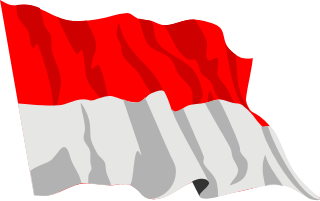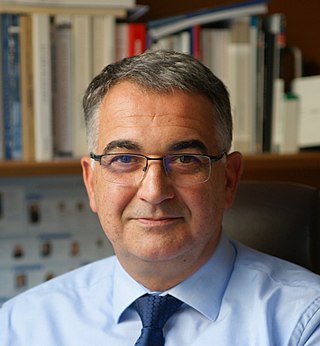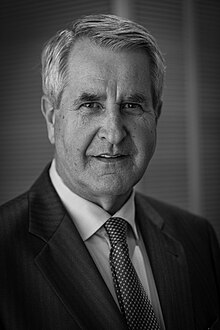
Alsace is a cultural region and a territorial collectivity in eastern France, on the west bank of the upper Rhine next to Germany and Switzerland. In January 2021, it had a population of 1,919,745. Alsatian culture is characterized by a blend of German and French influences.

Bas-Rhin is a département in Alsace which is a part of the Grand Est super-region of France. The name means 'Lower Rhine', referring to its lower altitude among the two French Rhine departments: it is downstream of the Haut-Rhin department. Both belong to the European Upper Rhine region. It is, with the Haut-Rhin, one of the two departments of the traditional Alsace region which until 1871, also included the area now known as the Territoire de Belfort. The more populous and densely populated of the pair, it had 1,152,662 inhabitants in 2021. The prefecture is based in Strasbourg. The INSEE and Post Code is 67.

Haut-Rhin is a département in the Grand Est region, France, bordering both Germany and Switzerland. It is named after the river Rhine. Its name means Upper Rhine. Haut-Rhin is the smaller and less populated of the two departments of the former administrative Alsace region, the other being the Bas-Rhin. Especially after the 1871 cession of the southern territory known since 1922 as Territoire de Belfort, although it is still rather densely populated compared to the rest of metropolitan France. It had a population of 767,083 in 2021.

The territory of the former Alsace–Lorraine, legally known as Alsace–Moselle, is a region in the eastern part of France, bordering with Germany. Its principal cities are Metz and Strasbourg. Alsace-Moselle was part of the German Empire from 1871 to 1918, and was subsequently reoccupied by Germany from 1940 until its recapture by the Allies at the end of World War II. Consisting of the two departments that make up the region of Alsace, which are Haut-Rhin and Bas-Rhin, and the department of Moselle, which is the northeastern part of Lorraine, there are historical reasons for the continuance of local law in Alsace-Moselle. Alsace–Moselle maintains its own local legislation, applying specific customs and laws on certain issues in spite of its being an integral part of France. These laws are principally in areas that France addressed by changing its own law in the period 1871–1919, when Alsace-Moselle was a part of Germany.

Sélestat is a commune in the Grand Est region of France. An administrative division (sous-préfecture) of the Bas-Rhin department, the town lies on the Ill river, 17 kilometres (11 mi) from the Rhine and the German border. Sélestat is located between the largest communes of Alsace, Strasbourg and Mulhouse.

Dambach-la-Ville is a commune in the Bas-Rhin department in Alsace in north-eastern France.

Alteckendorf is a commune in the Bas-Rhin department in the Grand Est region of northeastern France.

Wimmenau is a commune in the Bas-Rhin department in Grand Est in north-eastern France.

Kirchheim is a commune in the Bas-Rhin department and Grand Est region of northeastern France.

The history of the Jews in Alsace is one of the oldest in Europe. It was first attested to in 1165 by Benjamin of Tudela, who wrote about a "large number of learned men" in "Astransbourg"; and it is assumed that it dates back to around the year 1000. Although Jewish life in Alsace was often disrupted by outbreaks of pogroms, at least during the Middle Ages, and reined in by harsh restrictions on business and movement, it has had a continuous existence ever since it was first recorded. At its peak, in 1870, the Jewish community of Alsace numbered 35,000 people.

Roland Ries is a French politician from Alsace who has held several posts on local, regional and national level between 1997 and 2020.

Antoine Herth is a French politician who represented the 5th constituency of the Bas-Rhin department in the National Assembly from 2002 to 2022. He is a former member of The Republicans, which he left in 2018 to join Agir.

The Northern Vosges Regional Natural Park is a protected area of woodland, wetland, farmland and historical sites in the Grand Est region in northeastern France. The area was officially designated as a regional natural park in 1976.
The Alsace-Moselle Memorial is a museum dedicated to World War II in the Alsace-Moselle region, which was annexed by Germany. The Memorial, which was inaugurated on 18 June 2005, is located in Schirmeck in Alsace, near the former Natzweiler-Struthof concentration camp, opened by the Nazis in August 1940 at the beginning of the annexation.

Grand Est is an administrative region in northeastern France. It superseded three former administrative regions, Alsace, Champagne-Ardenne and Lorraine, on 1 January 2016 under the provisional name of Alsace-Champagne-Ardenne-Lorraine, as a result of territorial reform which had been passed by the French Parliament in 2014.

The Regional Council of Grand Est, formerly the regional council of Alsace-Champagne-Ardenne-Lorraine, is the deliberative assembly of the region of Grand Est. Jean Rottner of The Republicans (LR) is the current president of the regional council. He was elected on 20 October 2017, following the retirement of Philippe Richert on 30 September 2017.

The Alsace single territorial collectivity referendum was a referendum held on Sunday, 7 April 2013 in Alsace, France, which aimed at the creation of the single territorial collectivity of Alsace through the merging of the regional council of Alsace and the departmental councils of Bas-Rhin and Haut-Rhin. Even though there was a 57.65% majority of "Yes" votes, the project was not approved, as two other requirements were not met.

The Departmental Council of Bas-Rhin was the deliberative assembly of the French department of Bas-Rhin. Its headquarters were in Place du Quartier Blanc in Strasbourg.

Frédéric Bierry is a French politician who was a member of the UMP, then of the Republicans.

The Departmental Council of Haut-Rhin was the deliberative assembly of the French department of Haut-Rhin. It included 34 departmental councillors from the 17 cantons of Haut-Rhin. Its headquarters were in Colmar.


















